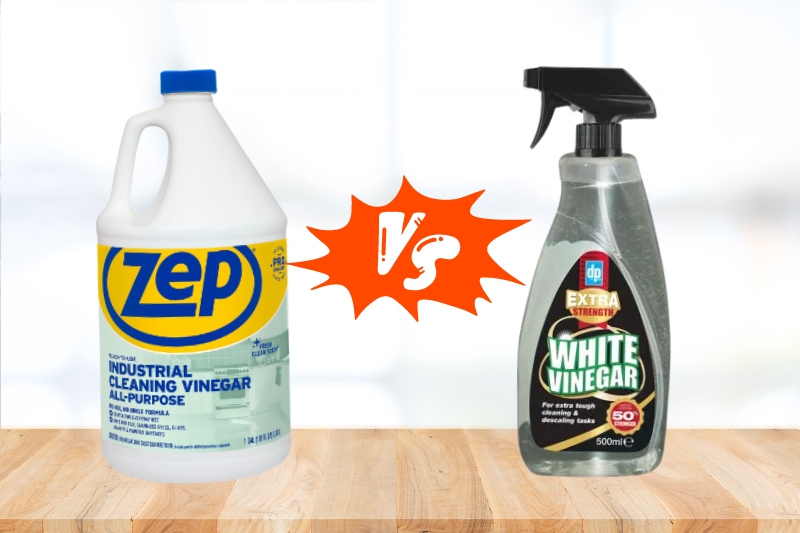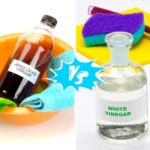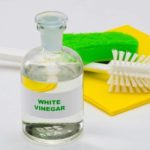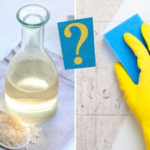Many people assume that vinegar only has its use in the kitchen. Although this is one of the most common uses of vinegar, it can also be used as a natural cleaning agent. This is because its acidic properties are highly effective at removing stains, disinfecting surfaces, and eliminating odours.
There are lots of different types of vinegar available in the UK, from apple cider vinegar to red wine vinegar, malt vinegar, and rice vinegar.
However, two of the most popular choices for household chores are cleaning vinegar and white vinegar. These two products are often believed to be the same thing, but they are actually two distinct types of vinegar.
In this article, we will provide a detailed comparison of cleaning vinegar vs. white vinegar to help you understand the difference between these two natural cleaning agents.
We will also advise on the best choice for cleaning and provide some of the best (and worst) things you can clean with vinegar. So, read on for all you need to know!

Is Cleaning Vinegar the Same as White Vinegar?
One of the most popular natural cleaning solutions in recent years is vinegar. Although there are multiple types that can be used around your home (for example, cleaning with apple cider vinegar), two of the best options are cleaning vinegar and white vinegar.
As these products are both types of vinegar, they share many similarities. However, some key differences between these two cleaners set them apart.
We have broken down these differences into four categories: acidity level, scent, availability in the UK, and safety precautions. Below is a detailed comparison of each factor.
1. Acidity level
The main difference between cleaning vinegar and white vinegar is their acidity levels. While cleaning vinegar contains 6% acetic acid and 96% water, white vinegar is made up of 5% acetic acid and 95% water. In other words, cleaning vinegar is more acidic.
Although this slight difference may not seem overly significant, the extra 1% acidity in cleaning vinegar increases its cleaning strength by 20%.
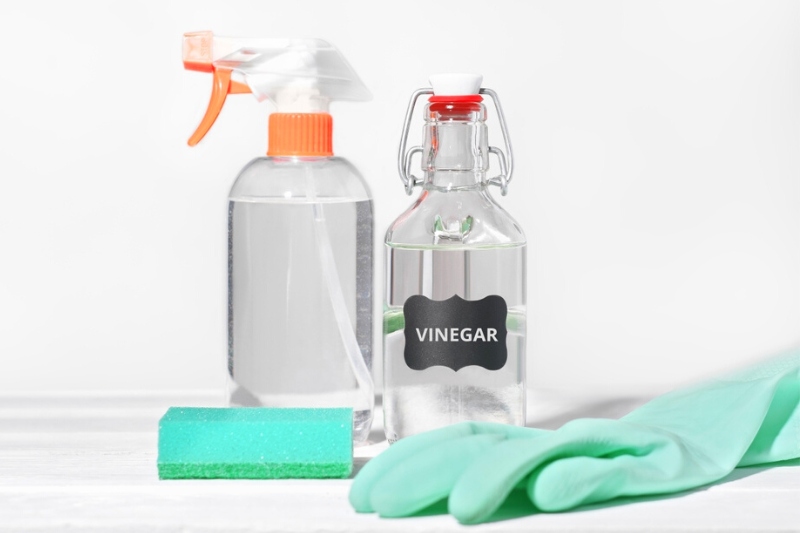
This makes this cleaning vinegar the best choice when tackling tough stains and thick layers of grime.
However, you also have to be careful when working with higher acidity, as it is more likely to damage certain surfaces, such as marble and wood.
2. Scent
Another difference between cleaning vinegar and white vinegar is their scent. When used on its own, both types of vinegar have a very strong, pungent odour that many people find unpleasant.
Unfortunately, this sour smell tends to linger for a long time after you’ve finished cleaning.
Manufacturers are aware that most people would wish to avoid this smell, and so many cleaning vinegar formulas have essential oils added to help neutralise it.
Some of the most popular scents include lavender, eucalyptus, and lemon. These essential oils can also be added to white vinegar with the same effect, but you won’t find a product that comes with them pre-mixed.

3. Availability in the UK
When it comes to availability, white vinegar is by far the easiest to purchase in the UK. Small bottles can be bought from all major supermarkets, or you can buy it in bulk from online retailers like Amazon.
Just be sure to look for distilled white vinegar rather than white wine vinegar, as these are not the same thing.
Unfortunately, not many products labelled as “cleaning vinegar” are available in the UK, so they can be harder to source.
However, some products are still formulated for cleaning. For example, Dri-Pak Extra Strength White Vinegar isn’t labelled as a cleaning vinegar, but it does contain 6% acetic acid.
4. Safety precautions
Lastly, it’s important to consider the added safety precautions associated with cleaning vinegar. As white vinegar is safe for both cooking and cleaning, some people assume the same is also true for cleaning vinegar. Unfortunately, cleaning vinegar is not safe for consumption.
As cleaning vinegar is manufactured for cleaning rather than eating, it may not have been tested for impurities that are harmful to the human body.
The increased acidity level could also cause stomach issues. Therefore, it is best to stick with white vinegar if you want to be able to use the product in the kitchen as well.
Should You Use Cleaning Vinegar or White Vinegar for Cleaning?
When choosing between cleaning vinegar and white vinegar, the best option depends on your personal needs and preferences.
Both products have their advantages and disadvantages (as shown below), so we recommend you pick the option that fits best for you.
White vinegar

Pros
- Easy to find in UK supermarkets
- Less acidic and better for delicate surfaces and objects
- Versatile and can be used for both cooking and cleaning
Cons
- Potent vinegar smell that many people find unpleasant
- Might not remove stubborn stains or requires multiple applications
Cleaning vinegar

Pros
- More acidic and works effectively removed stubborn stains
- Often pre-mixed with essential oils to produce a pleasant smell
Cons
- Difficult to find in the UK
- Manufactured for cleaning only and unsafe for consumption
- Increased acidity means it could damage some surfaces
The higher percentage of acetic acid in cleaning vinegar makes it a more potent cleaner, so it is an excellent option if you often have to tackle thick layers of grime and challenging stains.
However, it is also more likely to damage certain surfaces, such as wood (see below for more details).
On the other hand, white vinegar is the ideal choice for anyone wishing to purchase one product for use in cleaning and cooking.
It is also widely available in the UK, so it will be the best option if you are in immediate need of a new cleaner.
Can You Use Vinegar to Clean Everything?
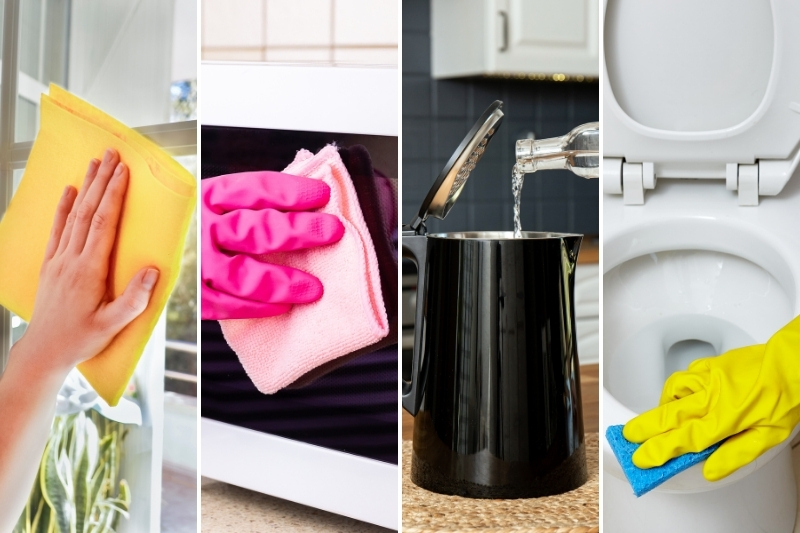
White vinegar and cleaning vinegar are extremely versatile natural cleaners that can be used all over your home. However, they cannot be used for absolutely everything!
Some of the best ways to utilise vinegar in your cleaning routine include the following:
- Cleaning windows: To get streak-free windows, create your own window cleaner by mixing together 250 ml of hot water, 250 ml of vinegar, and a teaspoon of washing-up liquid. This solution can be sprayed on your windows and buffed out with a microfibre cloth to leave the glass sparkling clean.
- Deodorising the microwave: With frequent use, it’s not uncommon for unpleasant smells to accumulate from your microwave. To eliminate these, try placing a bowl filled with equal parts water and vinegar into the microwave and running it for five minutes. By this time, any odours will be gone, and any debris can be wiped away with a sponge.
- Removing limescale: To remove tough limescale build-up, you need to create a cleaning scrub by mixing together two teaspoons of vinegar with one teaspoon of salt. Once combined, spread the scrub over the limescale, leave it to sit for up to 12 hours, and then scrub it away. This works particularly well when cleaning bathroom taps.
- Cleaning the toilet bowl: Removing brown stains and foul odours from your toilet bowl can be challenging, but the acidity of the vinegar will soon leave it looking brand new. For best results, pour 500 ml of vinegar into the toilet bowl and let it sit for three hours. After that, scrub the surface with your toilet brush and flush the cleaner away.
- Removing stains and odours: Vinegar can be added to your washing machine to help remove stains and odours from your clothing. Simply add 250 ml of white or cleaning vinegar to the drum during the wash cycle.
When Should You Not Use Vinegar to Clean?
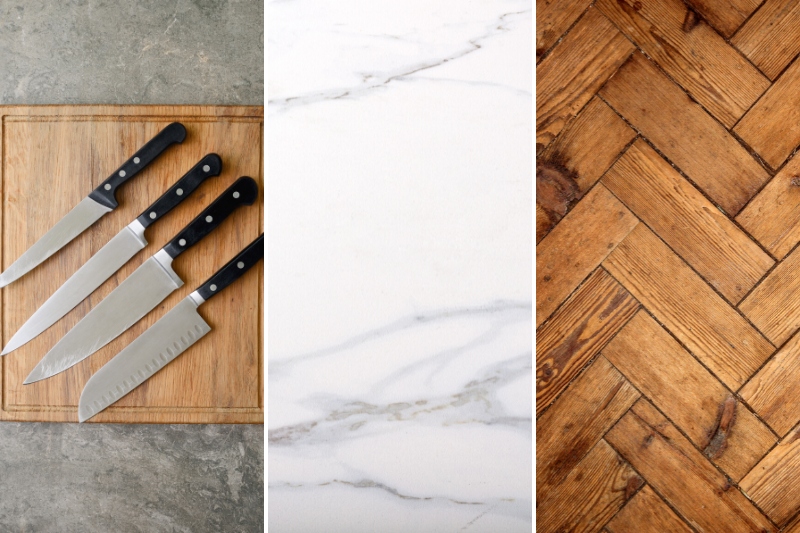
Although vinegar is a great cleaning agent in the vast majority of situations, a few materials could easily become damaged when exposed to high levels of acid.
In general, the three types of surfaces you need to be careful of are:
- Natural stone: If you own any countertops or flooring made of natural stone, such as granite or marble, try to avoid cleaning the surface with vinegar. The high acidity can dull the stone and damage any protective seals, leaving behind permanent stains.
- Metal: Acetic acid will also remove the protective layer from metal objects, such as irons, knives, bathroom taps, and chrome finishings. Once this layer has been removed, the acid will start to corrode the metal itself.
- Wood: Plenty of homes have sleek hardwood floors, wooden furniture, and other wooden objects that need to be regularly cleaned. These items are often coated in a wax finish that will be eaten away by the acid in the vinegar. This leaves the wood looking dull and cloudy.
Both white vinegar and cleaning vinegar can cause damage to the above surfaces.
However, cleaning vinegar is more prone to ruining your floors and furnishings because of its higher acidity content.
We recommend using another cleaning solution for these materials or doing a patch test on an inconspicuous area before rubbing vinegar over the entire surface.

Hannah has a passion for cleaning. She worked her way around Australia by cleaning hostels in exchange for free accommodation and used her cleaning skills to bag a job as a chalet host for a luxury ski company in France.
